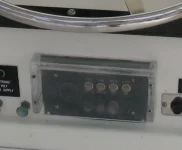Yes - on the 45C the stock location for the bottle sucks rocks (its right in the aft bilge water accumulation point!) and you CANNOT trip a CO2 can if you're in the bilge to stop a runaway - do that and YOU may die - further, if you DO use that method when you're NOT in the engine room you may be buying a new engine anyway (its NOT healthy to stop a diesel this way, although it will stop.)
There is no other rational place to put the size bottle necessary on the 45C. In addition the heat sensors for CO2 systems are notoriously fickle and difficult to accurately test - if they don't fire when you need them to you're screwed. For this reason on a CO2 system a manual pull is a MUST-HAVE, and yet IT has dangers too (like being pulled accidentally!)
The FE241 unit I got was very cheap (sold to me uninstalled and happened to be the right size), it requires NO actuator network (its a heat capsule much like a sprinkler head - absolutely failsafe and reliable) and its MUCH smaller and thus can be mounted up high enough that there's no chance for it to get wet. It is also a 10 minute job to remove it to weigh, which is all you need to do recertify it (plus look at the gauge) - if the weight is good and the gauge is green you're golden.
In the event of fire, ok, put the damn thing out - obviously. But a fuel-fed runaway is best stopped with a fuel shutoff, which I have. A lube-oil pullover runaway is going to be bad news no matter how you handle it - there's simply no way around this one - and it also shouldn't happen unless you let maintenance get away from you.
A replacement CO2 actuator and new bottle would have cost me more than the FE241 system did.


